#lughnasa
Text

Lughnasadh (sometimes written Lughnasa or Lúnasa) is a festival originating from Ireland that celebrates the start of the harvest season.
It is traditionally celebrated on August 1st (in the northern hemisphere) or halfway between the summer solstice and the fall equinox.
The festival is named for the Irish God Lugh and it is said that the festival started as a funeral feast and athletic competition to honor his mother or foster-mother Tailtiu who had died of exhaustion after clearing the plains of Ireland for agriculture.
#lughnasadh#lughnasa#lunasa#tarot#tarot spread#wheel of the year#divination#divination community#divination tools#tarot cards#divination witch#witchcraft#pagan#tarotblr#witchblr
406 notes
·
View notes
Text
Blackcrowing's Irish Pagan Festivals Master Post
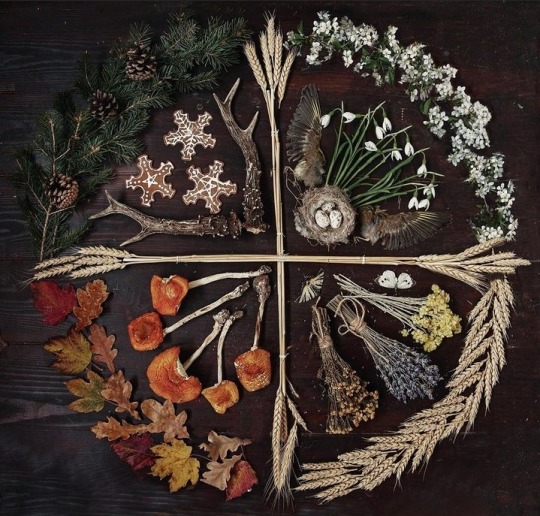
Samhain Festival
Samhain Authentic Foods
Imbolg Festival
Imbolg Authentic Foods
Bealtine Festival
Bealtine Authentic Foods
Lughnasadh Festival
Lughnasadh Authentic Foods
Art Credit - Familiar_flower
#lughnasa#lúnasa#lughnasadh#bealtaine#Baltaine#Beltane#imbolg#imbolc#fire festivals#fire festival#irish#irish mythology#irish polytheist#irish polytheism#irish pagan#irish paganism#irish reconstructionism#irish reconstructionist#celtic#celtic mythology#celtic pagan#celtic paganism#celtic polytheist#celtic polytheism#celtic reconstructionist#celtic reconstructionism#blackcrowing#samhain#pagan#paganism
155 notes
·
View notes
Text

Bird Noises dot png
Two doctor boyfriends and their loud-ass bird familiars walk into a bar, what happens next will warm your heart
Bonuses:


#the arcana#julian devorak#julian the arcana#the arcana game#fan apprentice#julian#my art#apprentice alexander#ilyacha#drew this back in august for lughnasa's birbday#lughnasa
73 notes
·
View notes
Text
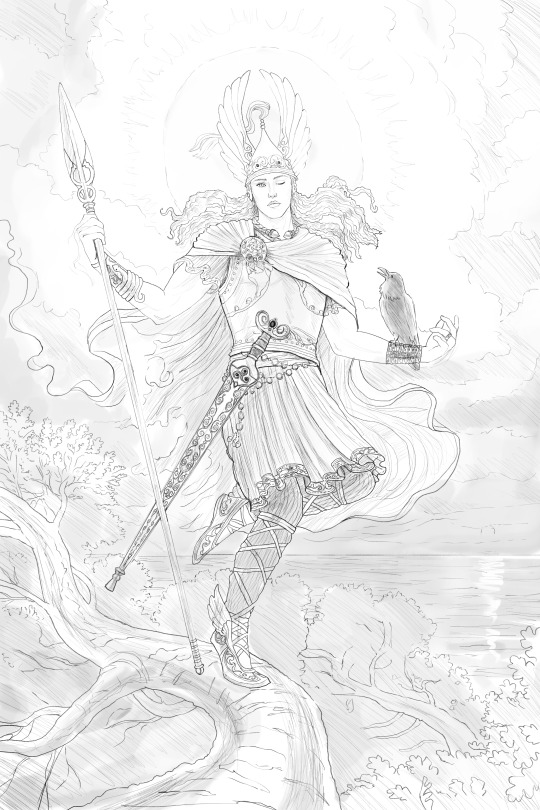
Lugh
#celtic#pagan#paganism#scottish#irish#celtic mythology#illustration#art#fantasy#drawing#lugh#lughnasa#heathen#tradition#european#god#gods#polytheism#celtic polytheism#myth#mythology#ireland#scotland#artists on tumblr
86 notes
·
View notes
Text
Let's celebrate Imbolc!
Today it’s Imbolc, let’s celebrate it!
Imbolc is a Gaelic traditional festival that celebrates the beginning of spring. Since the beginning of the spreading of Christianity in Ireland, it is also the feast of Saint Brigid, the country’s patron saint.
It gets celebrated between the 1st and the 2nd of February, halfway between the winter solstice and the spring equinox. The tradition comes from…

View On WordPress
#Beltaine#Brigid#Candlemas#Celebration#Celtic#Gaelic#Imbolc#Ireland#Isle of Man#Lughnasa#pagan#Pagan Celebration#Pagan Gods#Paganism#Raffaello Palandri#Samhain#Scotland
75 notes
·
View notes
Text
My Personal Favorite Lughnasadh Recipe I‘ve Found:
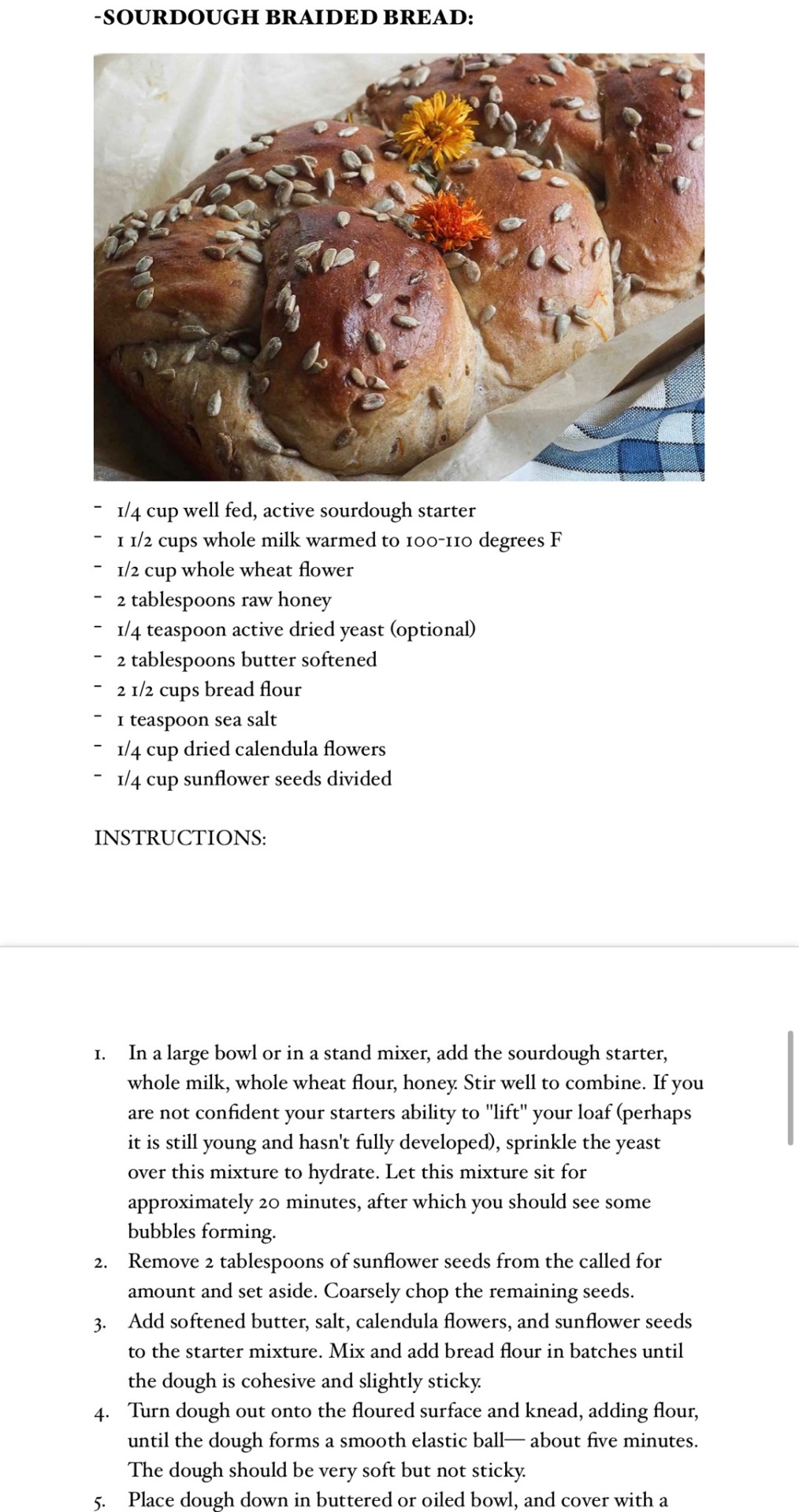
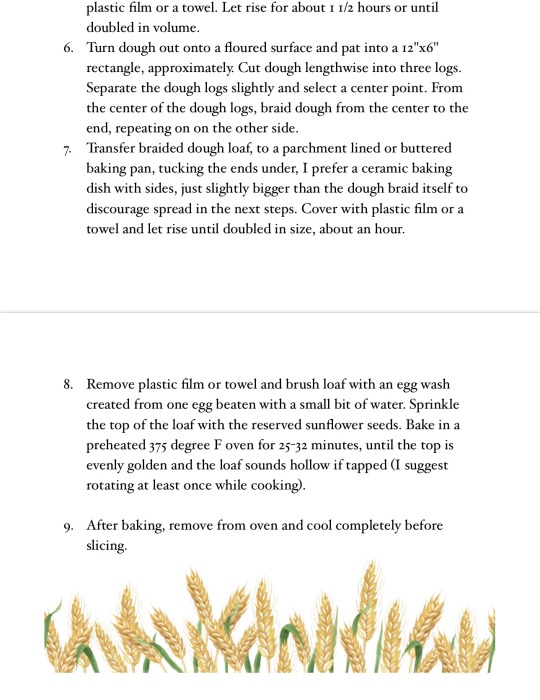
If you try it out, lmk!
#witchcraft#witch#witchblr#pagan#witchy#spirituality#paganism#lughnasadh#autumn recipes#summer recipes#harvest season#lughnasa#Lammas#bread
25 notes
·
View notes
Text
I am begging you to stop speaking like Lammas and Lughnasadh are the same holiday.
They fall on the same day but they are not the same.
Lammas is Anglo-Saxon, Lughnasadh is a Gaelic-Celtic holiday.
Lammas is a Christian holiday, Lughnasadh is a Pagan holiday.
So PLEASE no more "Lammas, aka Lughnasadh" or "Lughnasadh, otherwise called Lammas" they are not the same.
#I'm losing my marbles#witchcraft#lammas#lughnasadh#lughnasa#lugh#wiccan#celtic#wicca#beginner witch tips
349 notes
·
View notes
Text
A Fruitful Lughnasa
Today marks Lughnasa, the celebration of the first harvest. This usually focuses on summer fruits and grains, so there’s lots of blueberries/bilberries, baked goods, apples, and pears.
In another sense, it’s about coming together to share. Traditionally, it happened during a time of year when the earliest crops were spent, and the next round wasn’t ready for harvest yet. Lugh is also credited…
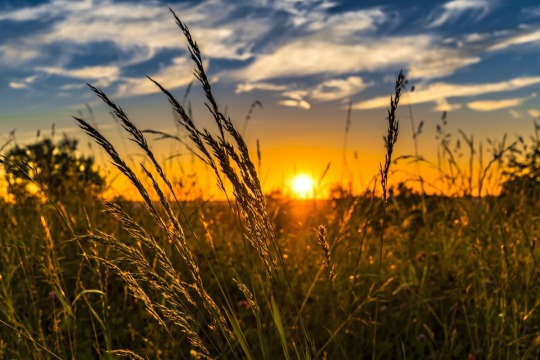
View On WordPress
12 notes
·
View notes
Text
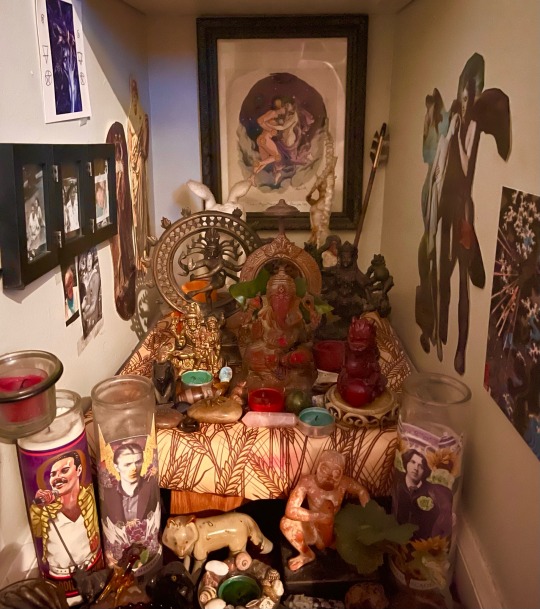

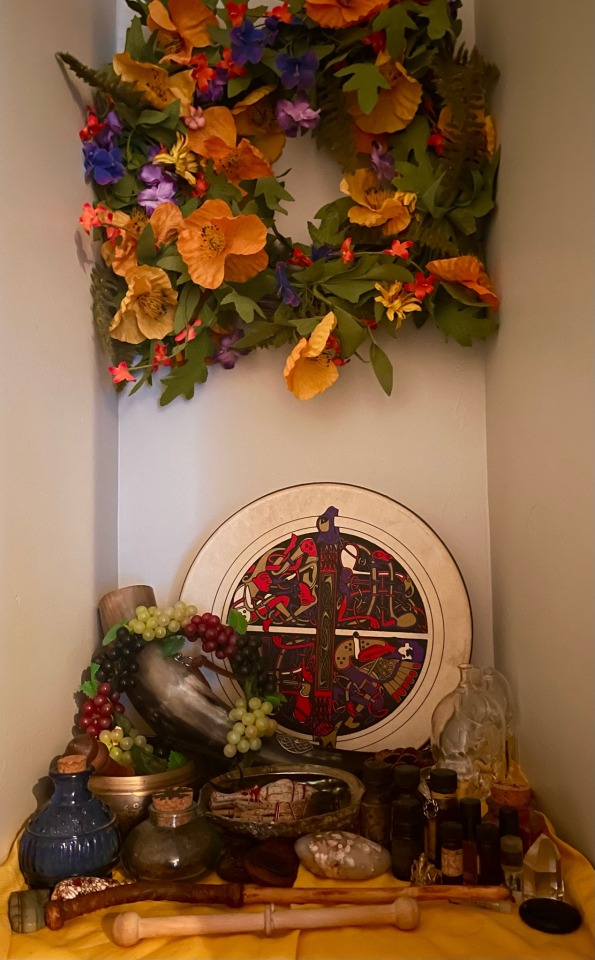
My lovely altar on this hot Lammas 2023
#pagan#pagan altar#apollo#cybele#sabbat#summer#lammas#lughnasadh#lughnasa#helios#artemis#first fruits#first harvest
8 notes
·
View notes
Audio
Listen/purchase: Lammas - Acoustic by Sowulo
3 notes
·
View notes
Text
Lughnasa: Flowing Between & Beyond Polarities to True Peace & Joy

We are now in the season of Lughnasa, which occurred on August 1st. I would like to share what my experience with this season has been so far in hopes that it may resonate and help others navigate this beautiful late summer time period (which lasts until the Autumn Equinox).
One of the major themes of Lughnasa is tempering the masculine energy of doing with the feminine energy of being and rest – to prevent exhaustion, burnout, and overwhelm. During Lughnasa, the Celts would symbolize this balance by running horses – to represent the masculine – through water – to represent the feminine.
The theme has shown up for me in many forms. It’s not uncommon for exhaustion and overwhelm to creep up for me around Lughnasa, sending me the message that I need to stop, rest, retreat, and give myself space to just be. I am shown where I am pushing myself too hard to do too much.
Learning how to connect with and live from my center by balancing discipline/commitment (the masculine) with surrender (the feminine) has been another major area of focus during this time of year. I have also been guided to explore what my creative process is and how it applies to my entire life, not just when I’m creating something tangible; how creation, expression, and action (the masculine) must emerge from stillness and intuition (the feminine). The art of living is in the ongoing dance between these energies. At times, this dance can feel a bit choppy rather than flowing – and that’s ok.
This time of year also draws my focus to accepting myself as I am, imperfections and all. I am reminded that it’s ok to make mistakes and that I am here to learn, grow, and heal just like everyone else. I don’t need to “be better” (more healed, more “spiritual,” more whatever) in order to be worthy. I am enough as I am.
I have learned that self-acceptance is needed in order for me to recognize my unique gifts and share my energy with the world, which is another central focus of this season. I have been shown that I need to let go of the belief that I need to be perfect before I can share my energy with the world.
Lughnasa marks the first harvest (while the Autumn Equinox marks the last). The energy of gathering, harvesting, and taking stock of where I am in life is strong at this time. My attention is drawn to questions such as:
What do I need to take ownership of and responsibility for?
What am I reaping as a result of what I have sown?
What am I ready to gather together and offer to the world?
Joy is another main theme of Lughnasa and during this season, I am guided to look at my relationship to joy – including all that stands in the way of it. This has involved the ongoing learning process of allowing all (both light and dark), while identifying only with the light. This looks like fully accepting all of my feelings, no matter how painful, “negative,” and far from joy as they may be, while remembering these feelings are not me: “I am feeling fear, but this fear is not me.”
As spiritual beings, our natural state and true essence is joy. I have learned that I cannot force myself to be happy and that true joy can only arise naturally from a state of allowing. I simply need to allow space for joy and peace to arise.
I have been guided to check in with myself about whether I am in allowing or resistance mode – am I resisting and trying to bypass uncomfortable feelings? Or the other side of the coin – am I allowing or have I crossed over into wallowing, which is just another form of resistance?
Allowing is peace. For me, peace often feels more accessible and easier to “choose” than joy. Peace is the gateway to joy. True peace and true joy are the same thing. I am also reminded how gratitude, another major Lughnasa theme, is an essential (and too often overlooked) ingredient to joy. Lughnasa strongly mirrors the polarity of joy and sadness; although we celebrate the joy of the first harvest, there may also be a sense of sadness as the wheel turns towards the dark half of the year.
Overall, I really love the ebbs and flows of Lughnasa season. I find this to be a truly productive time of year– in the most important ways. As an introvert, I also love feeling into the gradual slow down and turning inwards. This shift becomes much more pronounced in the month of September. As the feminine energy gradually rises, the masculine energy is like a dimming candle that burns a little lower and slower each day as we near Autumn.
✨Follow me on Instagram: instagram.com/turningwheel360✨
#Lughnasadh#lughnasa#lammas#pagan#spirituality#leo#leo season#flowing#acceptance#allow#divine feminine#divine masculine#rest#burnout#joy#true joy#celtic wheel#wheel of the year
23 notes
·
View notes
Text
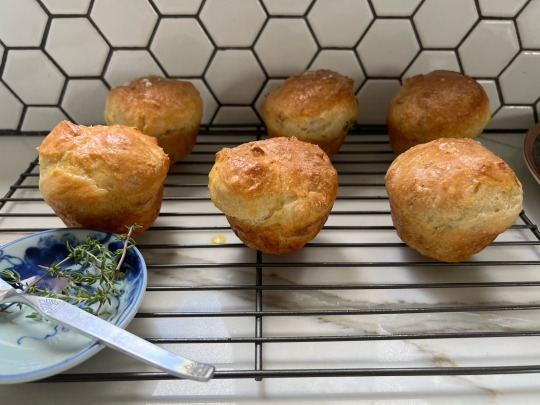
Happy Lughnasadh!!
5 notes
·
View notes
Text
Important Facts about Lughnasadh from an Irish Celtic Reconstructionist
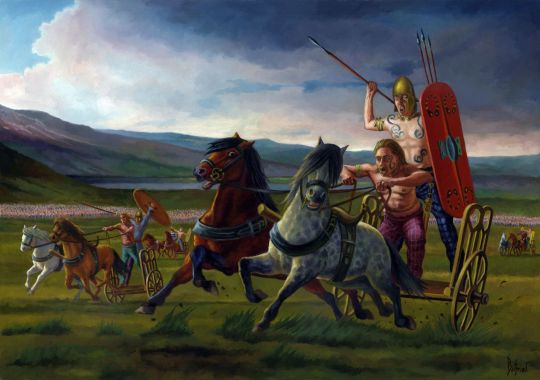

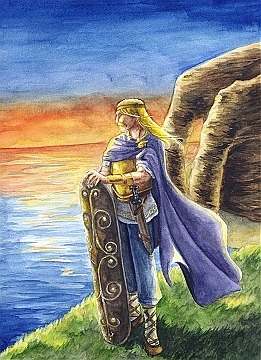
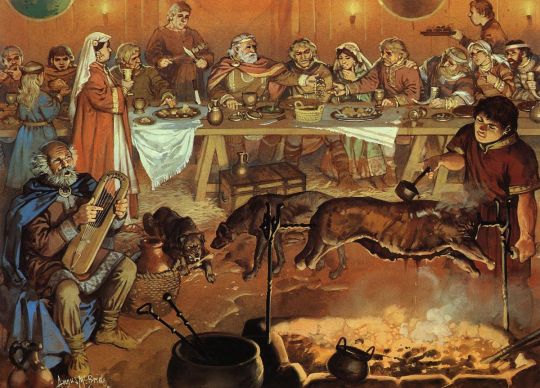
Spelling and Pronunciation
OI. Lughnasadh (Loo-na-sa), sometimes spelled Lughnasa or Modern Irish Lúnasa. Not to be confused with other harvest festivals like Lammas.
Dates
Most reconstructionists celebrate Lughnasadh on July 31st - August 1st from sundown to sundown by the Gregorian calendar, while others choose to celebrate the transitional period between the months as they would have been by the Julian calendar (about 13 days later by the Gregorian calendar).
Traditionally this festival likely would have happened as the grains were ready for harvesting or possibly even when the wild bilberries were ripe (as some scholars mention that if the grains were not ripe they would still preform a ritualized ‘first harvesting’ but it is possible this tradition came after the festival was firmly tied to a calendar date.)
Importance in the Mythos
In the mythologies it is well documented that this festival coincides with Lugh’s funeral games in honor of his foster-mother Tailtiu, known as Aonach Tailteann. In the mythologies she is said to have died of exhaustion after clearing the plains of Ireland for agricultural needs. The first documented instance of Lughnasadh in the mythologies was in the Wooing of Emer, Tochmarc Emire, which makes sense given the importance of marriages at this time of the year. It is not known specifically but widely speculated that the curse of the Ulstermen by Macha took place at a horse race for this festival.
In later time periods it is common to see a form of struggle, normally between the ‘protective’ forces and ‘destructive’ forces. The modern equivalent being the struggle between Saint Patrick and Crom Dubh but this is likely a reflection of an early struggle between Lugh and Balor (which I previously mentioned in my info-dump on Bealtaine).
Celebration Traditions
Aonachs, funeral games, have (to the best of our knowledge) been a custom in Ireland since the bronze age and were practiced on and off into the middle ages. They had both personal and community functions and occurred in three stages. Stage one was the funeral proceedings themselves. They would last one to three days, likely depending on the importance of the individual in question. Mourning songs and chants were participated in by both the attendees and the Druids. The second stage was for proclaiming of laws. Aonachs were a time when universal peace between túaths was declared. The third stage was that of Cuiteach Fuait, games that tested mental and physical abilities. These games included the well known horse and chariot races, wrestling games, boxing, high jumps but also competitions in strategy, singing, story telling and between various skilled craftsmen.
It was incredibly common for marriages to be arranged and preformed during this festival. More well known ‘trial marriages’ (lasting a year and a day) were still preformed at this festival up until the 13th century. It is likely that the coupling occurring at this time of year had an effect on the relationship to births seen at Imbolg (which falls 9 months later).
MacNeill, a leading scholarly expert on the festival, notes that a ritualistic bull sacrifice was made at this festival and the bull would then be eaten. I could not find any definitive evidence to support the idea, but I think it was likely that bulls in general would be culled from the herd at this point in the year to supply the feast.
Art credit @ire-ethereal
#irish#irish mythology#celtic#irish paganism#irish polytheism#paganism#celtic paganism#celtic polytheism#pagan#celtic reconstructionist#celtic reconstructionism#celtic mythology#irish reconstructionism#irish reconstructionist#festival#fire festival#lugh#lughnasadh#Lughnasa#NOT lammas#Tailtiu#harvest#blackcrowing
262 notes
·
View notes
Note
copper and moss + gentle with alexander!

Sacha and Lughnasa have a moment together
This was such a beautiful palette! Thank you so much for sending it in!
36 notes
·
View notes
Text
From Ballycroy in Mayo comes a saying proverbial in thunder-storms:
'Tá gaoth Lugha Lámhfhada ag eiteall anocht san aer.'
'Seadh, agus drithleógaí a athar. Balor Béimeann an t-athair.'
(Lugh Long-arm's wind is flying in the air to-night.
Yes, and the sparks of his father, Balor Béimeann.)
The Festival of Lughnasa. Máire MacNeill.
15 notes
·
View notes
Text
Poem for Lughnasa
Rising water doesn't float all boats:
Go tell that to the towns
drowned
beneath lakes
in the name of "progress"
for some big city downstream...
🏙️ 🌊 ⛵ 🌆 🛠️ ⚙️
6 notes
·
View notes